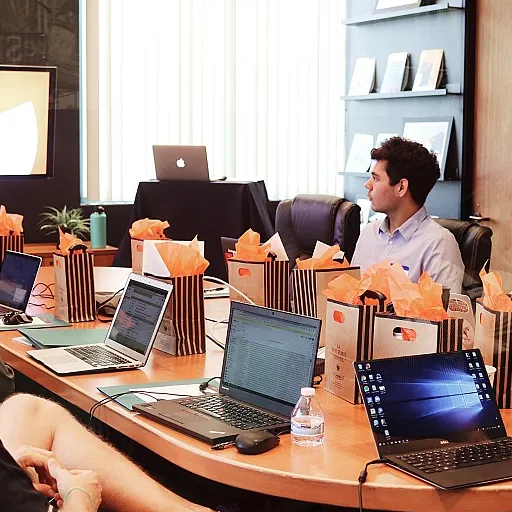
Understanding Applicant Tracking Systems
Navigating the World of Applicant Tracking Systems
Applicant Tracking Systems (ATS) have become an integral part of the hiring process for many organizations today. These systems ats play a crucial role in streamlining the recruitment process, making it easier for hiring managers and recruiters to sift through an influx of resumes and find top talent. From candidate sourcing to interview scheduling, ATS platforms handle every phase of the recruitment journey. They allow for a paper-free environment, as digital records replace traditional paper trails, improving efficiency and reducing human error. When a candidate applies for a job, their resume and application data are entered into the system. The ATS then sorts and filters these applications based on specific criteria set by recruiters or hiring managers. This helps in ensuring a seamless candidate experience and facilitates quicker decision-making. Although the use of such systems brings about improved talent acquisition processes, it also poses challenges in terms of privacy security. As we delve deeper, it's essential to recognize how these systems manage digital records and the significance of maintaining such information securely. Explore how organizations are indirectly influencing applicant perceptions through insights into employer branding strategies and systems like these. Learn more by visiting this Human Potential Summit, which explores further dimensions of transforming HR processes.The Importance of Digital Records in Recruitment
The Role of Digital Records in Modern Recruitment
In today’s fast-paced recruitment landscape, digital records have become a cornerstone of effective talent acquisition. As organizations strive to attract top talent, maintaining comprehensive and accurate digital records is crucial. These records not only streamline the hiring process but also enhance the overall candidate experience.
Digital records allow recruiters and hiring managers to efficiently manage and access candidate data. This capability is essential in a competitive job market where the ability to quickly identify and engage with potential hires can make a significant difference. By leveraging digital records, organizations can ensure a more organized and paper-free recruitment process, which is increasingly important in promoting employer branding.
Moreover, digital records facilitate better communication and coordination among recruiters, managers, and candidates. They enable seamless interview scheduling and provide a centralized repository for all relevant resume and application information. This not only improves the efficiency of the recruitment process but also enhances the overall candidate sourcing strategy.
For more insights into how digital records are transforming recruitment, you can explore the opportunities available with Toro Careers.
How ATS Manage Digital Records
Efficient Management of Digital Records in ATS
Applicant tracking systems (ATS) have become an indispensable tool in transforming the recruitment landscape, particularly in managing digital records. The main function of an ATS is to streamline the hiring process by centralizing candidate data, thus making it easier and more efficient for recruiters and hiring managers to handle numerous applications. This centralized system ensures that all resumes and application details are systematically stored, allowing for better organization and retrieval of information when needed. Most ATS platforms operate as a comprehensive digital database that manages candidate records from initial submission to final decision. This streamlined recruitment process not only helps in reducing the reliance on paper documents but also supports a more eco-friendly, paper-free work environment. With all information digitally logged, talent acquisition teams can effortlessly perform applicant tracking, ensuring top talent is identified and prioritized. A critical aspect where ATS significantly contributes is in candidate sourcing. By automatically sorting and ranking resumes, the system saves recruiters substantial time, ensuring that the top candidates are always at the forefront for consideration. This efficiency is not just limited to sorting resumes; systems ATS also integrates capabilities like interview scheduling, enhancing the overall candidate experience. However, with the huge volumes of data being processed, privacy and security remain paramount. Top ATS providers prioritize robust measures to protect sensitive candidate information. Employers and talent recruiters are continuously reassured of their system’s capacities through regular updates and adherence to data protection regulations, guaranteeing that digital records remain secure throughout the entire recruitment process. For more insights into how ATS systems complicate job searches and the dual nature of their efficiency and complexity, refer to the navigating the human resources landscape at jcpenney.Privacy and Security Concerns
Addressing Privacy and Security Challenges in ATS
When it comes to using applicant tracking systems (ATS) for recruitment, concerns about privacy and data security are paramount. The use of digital records in these systems introduces potential risks, as sensitive information about candidates is stored and managed electronically throughout the hiring process.
ATS platforms collect a significant volume of data, such as resumes, application forms, and interview schedules, making them prime targets for data breaches and cyberattacks. Companies must ensure that they are taking adequate steps to protect candidate data, not only to comply with regulations but also to uphold their employer branding and maintain trust. Employing data encryption techniques and implementing stringent access controls are vital measures for safeguarding information.
In addition to security protocols, the adoption of a thorough privacy policy plays a critical role in governing how candidate data is handled. Recruitment managers and hiring professionals must be transparent with applicants about the data collection process and its purpose. This transparency fosters trust and enhances the overall candidate experience.
Organizations should stay informed about the latest trends and technologies in data protection to continually improve their ATS's security features. In doing so, they not only protect themselves but also contribute to a positive perception among top talent. Protecting digital records is an indispensable part of a successful talent acquisition strategy.
Ultimately, while the benefits of managing digital records in ATS are numerous, companies must not overlook the importance of maintaining robust privacy and security practices. As these systems evolve, so too should the measures to mitigate risks, ensuring a secure and efficient recruitment process.
Best Practices for Candidates
Enhancing Your Visibility in Applicant Tracking Systems
Navigating the recruitment landscape effectively requires a clear understanding of how to optimize your job application for Applicant Tracking Systems (ATS). These systems are pivotal in the hiring process, acting as gatekeepers by sorting through resumes and streamlining candidates for recruiters and hiring managers. Here are some actionable strategies to enhance your candidate experience and bolster your chances of securing top talent positions:- Tailor Your Resume: Integrate relevant keywords that align with the job description. ATS platforms are designed to scan for specific terms related to the job, so using precise language can significantly boost your visibility in hiring systems.
- Use Simple Formatting: While creativity is valued, ATS may struggle with intricate designs. Opt for a clean, professional resume layout that prioritizes clear sections and standard font types, ensuring that digital records capture your data accurately.
- Focus on Relevant Experience: Highlight experiences that align closely with the requirements of the role. The recruitment process often involves a detailed comparison of applicant skills to job needs, so emphasizing relevant accomplishments is crucial.
- Regularly Update Profiles: Keeping your online profiles current is essential. Recruitment systems frequently pull data directly from digital profiles, making up-to-date information vital in the recruitment process.
- Understand Privacy Settings: While increasing your visibility, be mindful of privacy security settings on job platforms. It’s important to balance exposure with maintaining your privacy.
Future Trends in ATS and Digital Record Keeping
Emerging Trends in Applicant Tracking Systems
In the world of recruitment and talent acquisition, technology continues to advance at a rapid pace, causing significant transformations in the way companies manage digital records. Applicant Tracking Systems (ATS) are at the forefront of these changes, constantly evolving to enhance the hiring process and improve the candidate experience.- AI and Machine Learning: One major trend is the integration of artificial intelligence (AI) and machine learning in ATS platforms. These technologies aid in automating the recruitment process, making it easier for recruiters and hiring managers to sift through numerous resumes efficiently. By analyzing candidate data, these advanced systems can identify top talent faster and with greater accuracy.
- Enhanced Candidate Sourcing: Another emerging trend is the focus on developing sophisticated tools within ATS for candidate sourcing. Companies are aiming to construct more strategic databases, allowing them to tap into a broader range of potential candidates. This trend aligns with the shift towards a more paper-free environment, facilitating more streamlined management of digital records.
- Improved Privacy and Security Measures: As discussed previously, maintaining privacy and security of candidate data is paramount. Future ATS will likely prioritize enhanced measures to protect sensitive information, addressing privacy security concerns while reassuring both candidates and employers of data safety during the recruitment process.
- Better Integration and User Experience: As the demand for seamless experiences increases, ATS platforms are expected to offer better integration with other recruitment technologies. This includes improving the connection between interview scheduling tools and ATS, ultimately enhancing the overall candidate experience and employer branding.











